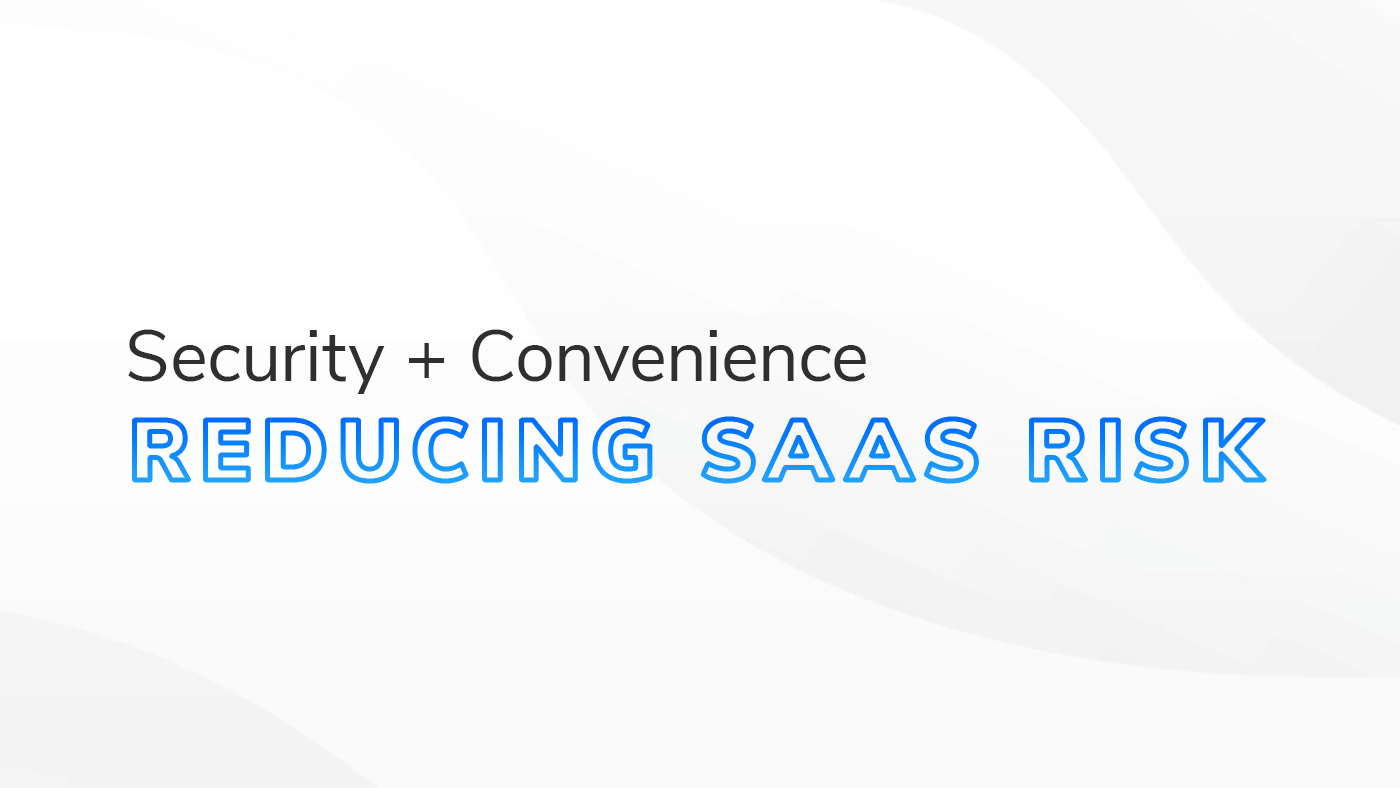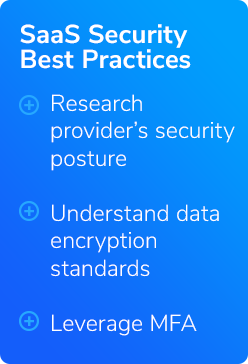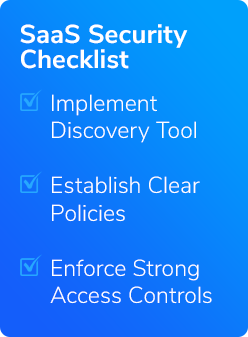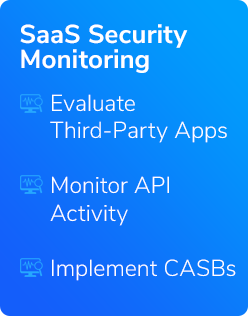SaaS Security: Don’t Allow Convenience to Compromise Your Data
- Written by: Ryan Mosher

Software as a Service (SaaS) has transformed how businesses operate—offering exceptional convenience and cost-effectiveness—in the new era of remote and hybrid work.
Google Workspace alone boasts over 3 billion users worldwide, while Microsoft has over 400 million Office 365 users. On average, a typical organization uses well over 100 different SaaS applications.
The numbers don’t lie; SaaS applications are critical to running an efficient business. However, as SaaS use continues to grow, so do its security challenges.
SaaS Security Risks
SaaS offers a compelling value proposition: on-demand software, reduced costs, and simplified management. But like any powerful tool, it comes with risks.
Microsoft itself has even recognized that SaaS applications provide a wide attack vector. That recognition is reflected in its Terms of Use, which hold customers responsible for any end-user compromise within Microsoft 365.

Here are three critical threats that can compromise your SaaS security:
Multi-tenancy Vulnerabilities: Sharing the Infrastructure, Sharing the Risk
The very foundation of SaaS—shared infrastructure—introduces complexity. Multi-tenancy means multiple organizations share the same underlying hardware and software resources. While efficient and cost-effective, it also means a security breach in one tenant's environment could potentially impact others.
Data breaches and unauthorized access become real possibilities if the SaaS provider's security measures are not robust.

SaaS Security Best Practices:
- Research the provider's security posture. Look for certifications like SOC 2 and inquire about their security practices.
- Understand their data encryption standards. Your data should be encrypted at rest and in transit to ensure confidentiality.
- Leverage Multi-Factor Authentication (MFA). Adding an extra layer of authentication strengthens your defenses.
Shadow IT and Uncontrolled Sprawl
Shadow IT is using technology resources by a department or individual without formal IT department approval. These unsanctioned apps create blind spots in your security because IT teams are unaware of their existence.
Without proper monitoring, you have no way of knowing what data is flowing through these applications or if they adhere to basic security standards. With 62% of insider threats caused by employee negligence or error, unmonitored SaaS applications pose a significant security risk.
SaaS Security Checklist:

- Implement a SaaS discovery tool. Gain visibility into all the SaaS applications used within your organization.
- Establish clear policies for SaaS usage. Educate employees about approved applications and the risks of shadow IT.
- Enforce strong access controls. Limit access to SaaS applications based on the principle of least privilege.
Insecure Integrations with Third-Party Apps: Convenience with a Side of Risk
SaaS applications often integrate with third-party tools to enhance functionality and streamline workflows. However, these integrations rely on APIs (Application Programming Interfaces), which can be a double-edged sword.
Unsecure APIs can become cyberattack gateways, exposing sensitive data if not correctly configured. An estimated 70% of organizations share sensitive content outside their company through SaaS applications, highlighting the potential for data leakage through insecure integrations.
SaaS Security Monitoring:

- Evaluate the security posture of third-party applications. Don't assume that just because an app integrates with your SaaS platform, it's inherently secure.
- Monitor API activity. Track user access and data flow through integrations to identify suspicious behavior.
- Implement Cloud Access Security Brokers (CASBs). These tools provide advanced security capabilities specifically designed for cloud environments.
Focusing in on SaaS Security Solutions
While SaaS offers undeniable benefits, it's crucial to remember that security is a shared responsibility. The onus doesn't solely fall on the provider's shoulders—in fact, most times it doesn’t. Organizations must be proactive in safeguarding their data and applications. Understanding the security risks and implementing SaaS security best practices can significantly strengthen your security posture.
Here are some additional tips to remember:
- Stay informed. The security landscape is always evolving—particularly with SaaS applications. Stay up-to-date on the latest threats and vulnerabilities impacting SaaS environments.
- Regularly review and update your security policies. As your business and SaaS usage change and grow, ensure your policies reflect current needs.
- Educate and empower your employees. Employees are often the first line of defense against cyberattacks. Regular security awareness training is essential.
By taking a comprehensive approach to SaaS security, you can ensure a secure and productive cloud environment for your organization.
How a Managed Service Provider Can Bolster Your SaaS Security
Managing the expanding SaaS landscape and implementing adequate security measures can be a heavy lift for internal IT teams. This is where a Managed Service Provider (MSP) can be a valuable partner. An MSP offers a range of security services specifically designed to protect your SaaS environment, including:
- SaaS Security Assessments: MSPs can conduct a thorough analysis of your SaaS security posture, identifying vulnerabilities and recommending corrective actions.
- SaaS Monitoring and Threat Detection: MSPs leverage advanced tools and expertise to continuously monitor your SaaS applications for suspicious activity and potential threats.
- SaaS Security Policy Development and Enforcement: MSPs can help you develop and implement comprehensive SaaS security policies that align with industry best practices.
- Ongoing Security Awareness Training: MSPs can provide your employees with regular security awareness training to keep them informed about the latest cyber threats.
By partnering with an MSP like HBS, you gain access to a team of security professionals with the expertise and resources to effectively manage your SaaS security needs. This allows your internal IT team to focus on core business initiatives while ensuring your data and applications remain protected.
Learn more about how HBS monitors, protects, and prevents your SaaS applications from becoming a security headache. Reach out today.






